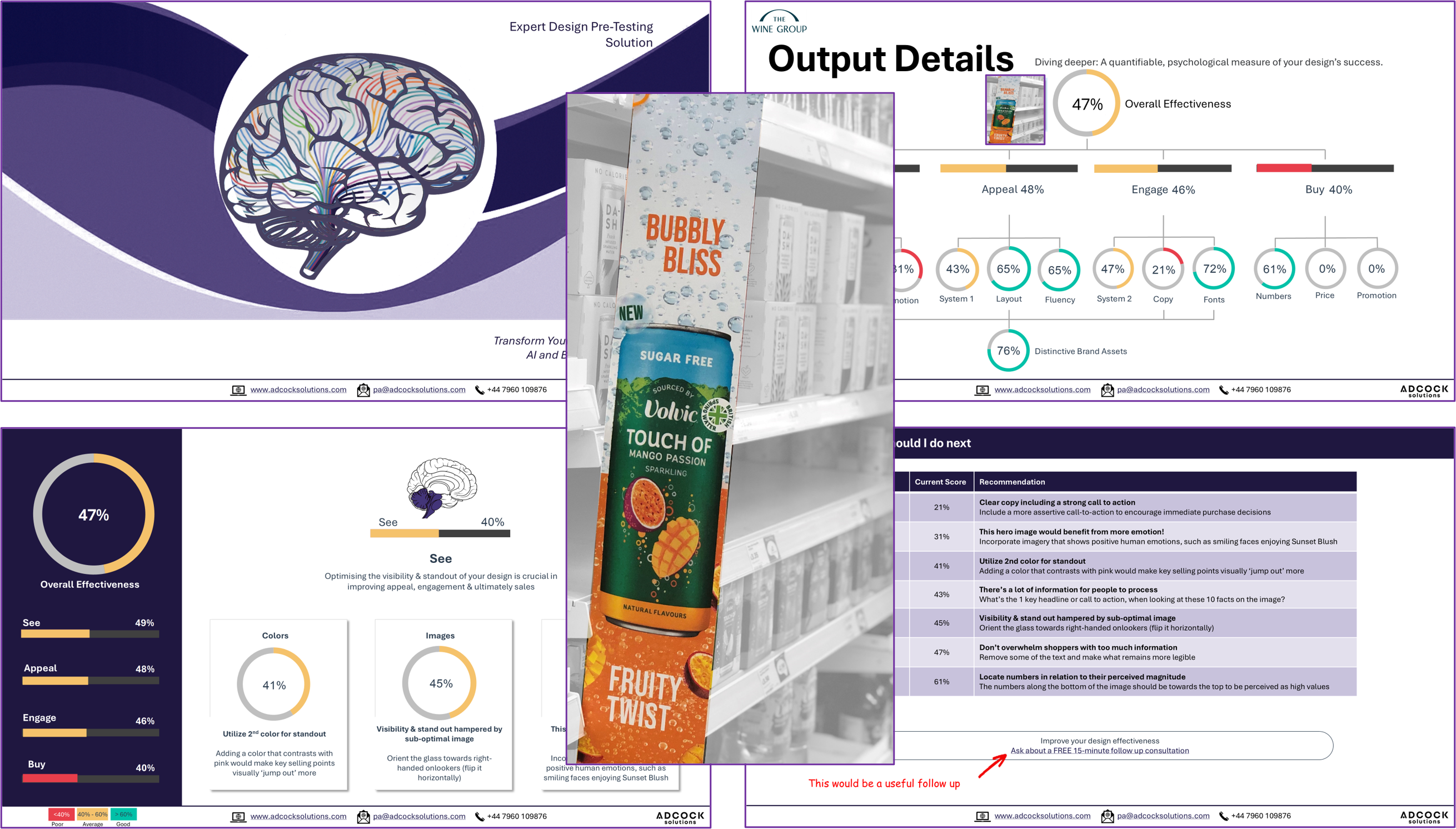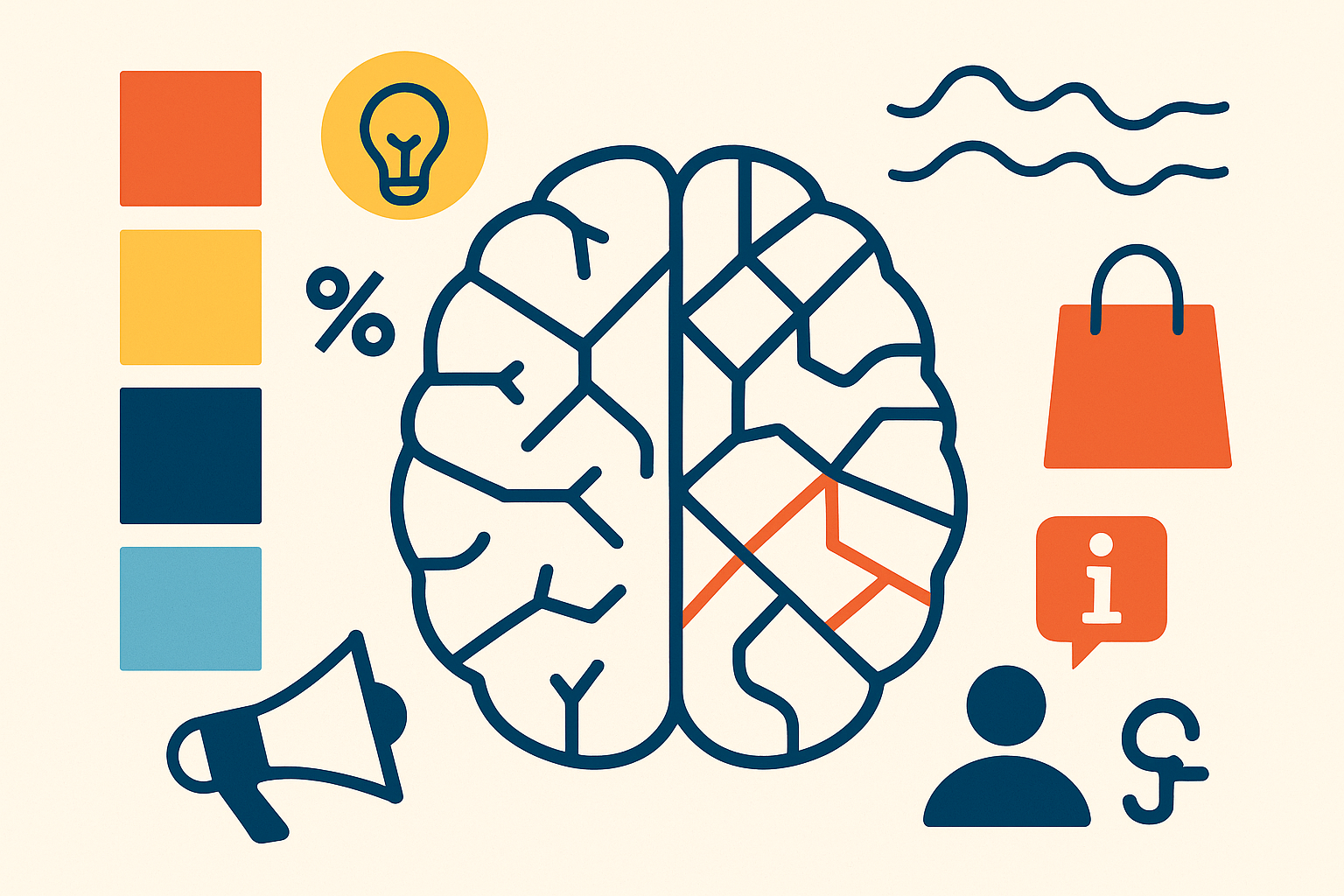In today’s hyper-competitive marketplace, packaging and shopper marketing initiatives are far more than just container and branding, they are communicators, mood-setters, and sometimes, even deal-breakers. But how do we really understand how these important shopper marketing interventions influence shoppers on an emotional level? How do we bridge the gap between shopper psychology and creative design decisions?
That’s the exact challenge we set out to solve with a pioneering project that culminated in the development of a practical, interactive design tool: the Creative Test.
This tool is designed specifically for packaging and shopper marketing designers and developers, providing an accessible way to engage with the science behind shopper emotion and behaviour. In this blog, I’ll break down the five core components of the tool: The Project, The Knowledge, The Framework, The Scenarios, and The Iterative Process, and show how they help demystify the emotional aesthetics and robustly quantify design effectiveness before interventions go live.
1. The Project: From Theory to Practice
At the heart of this initiative is a bold aim: to make complex shopper research actually usable by design teams. While a wealth of psychological and neuroscientific knowledge exists about how people perceive and emotionally respond to products, much of it is buried in academic language, or rooted in other disciplines like Human-Computer Interaction, sociology, or marketing. That makes it tricky for designers, who often rely on visual thinking and hands-on experimentation, to apply it in practice.
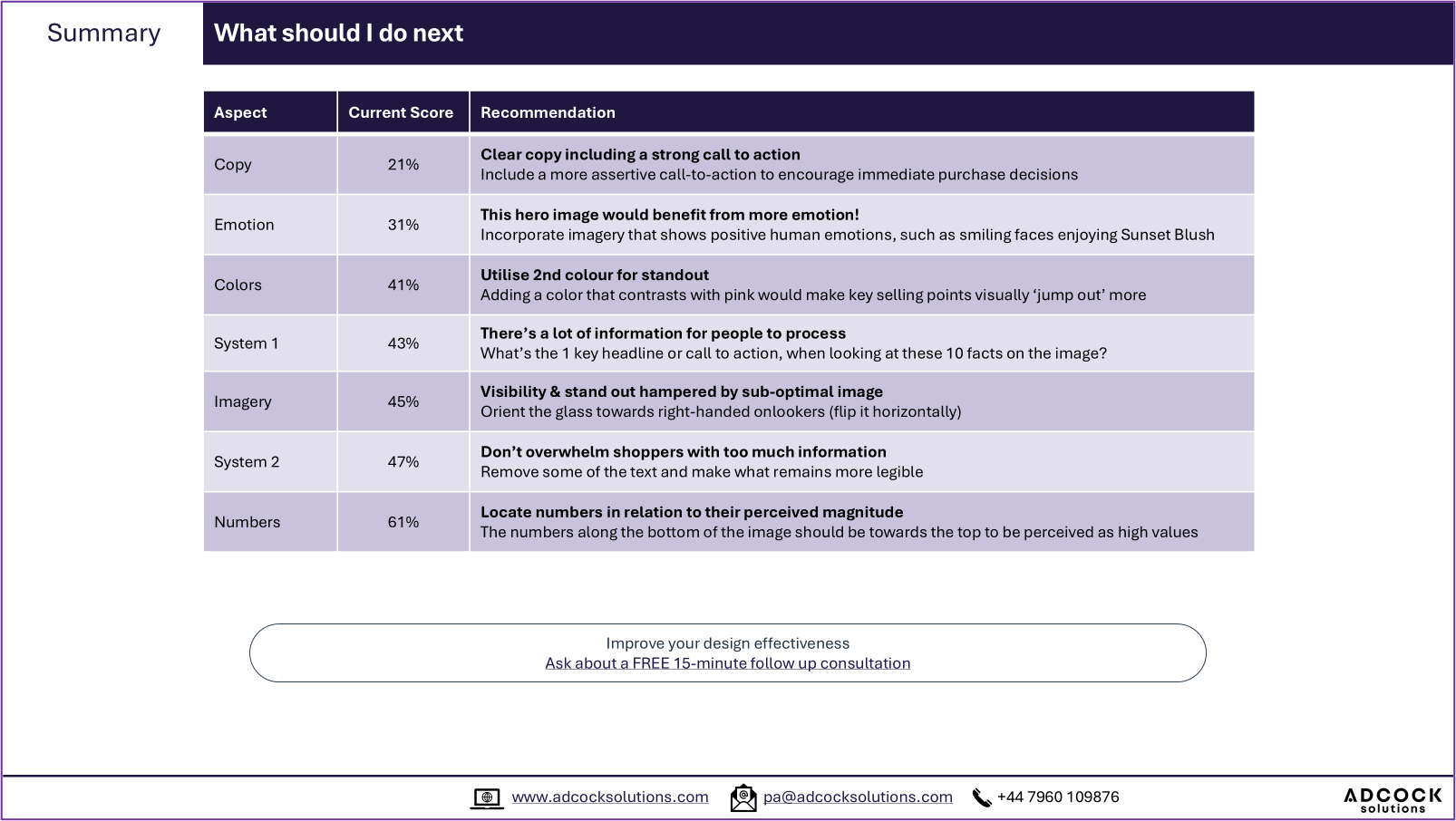
We set out to turn that rich but disparate research into something interactive, layered, and design-friendly. In other words, not just another static PDF or academic framework, but an interactive measurement tool that quantifies design effectiveness and offers valuable psychological insights relating to improvement and design optimisation
2. The Knowledge: Bridging Design Research and Design Practice
The second layer of the tool gives us the raw material: the research itself. Imagine a Venn diagram where two massive circles overlap, on one side, Design; on the other, Psychology.
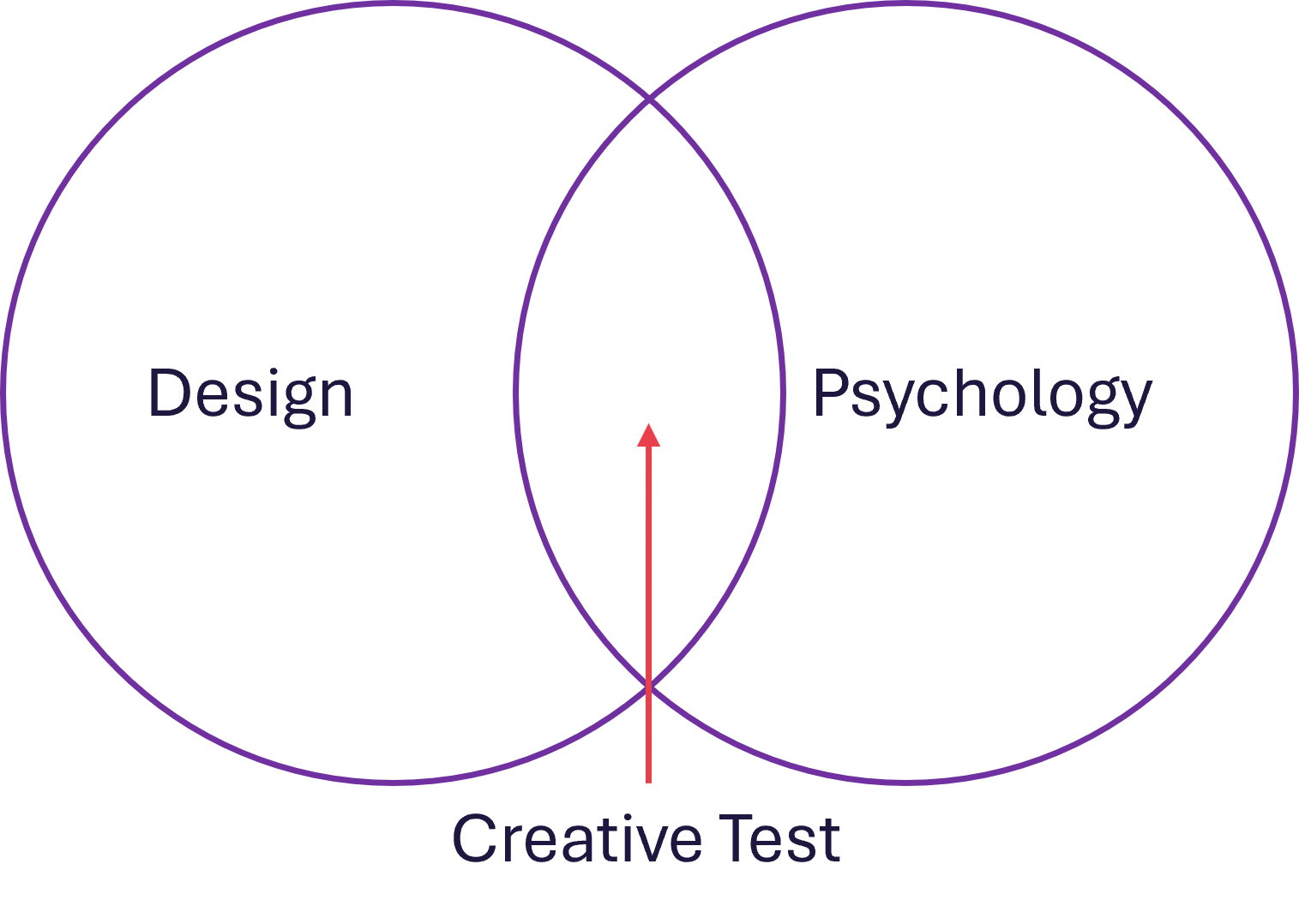
From the psychology side, the tool draws on more than 1,500 established academic theories from social science, business, and engineering; areas where statistical rigour and empirical data dominate. From the practice side, it taps into real-world case studies, marketing insights, and marketing-specific literature.
But rather than simply listing these sources, the tool organises them into an intuitive measurement interface. Designers can choose to stay at a high level, or dive deeper into specific theories, such as Processing Fluency and Emotional Connection.
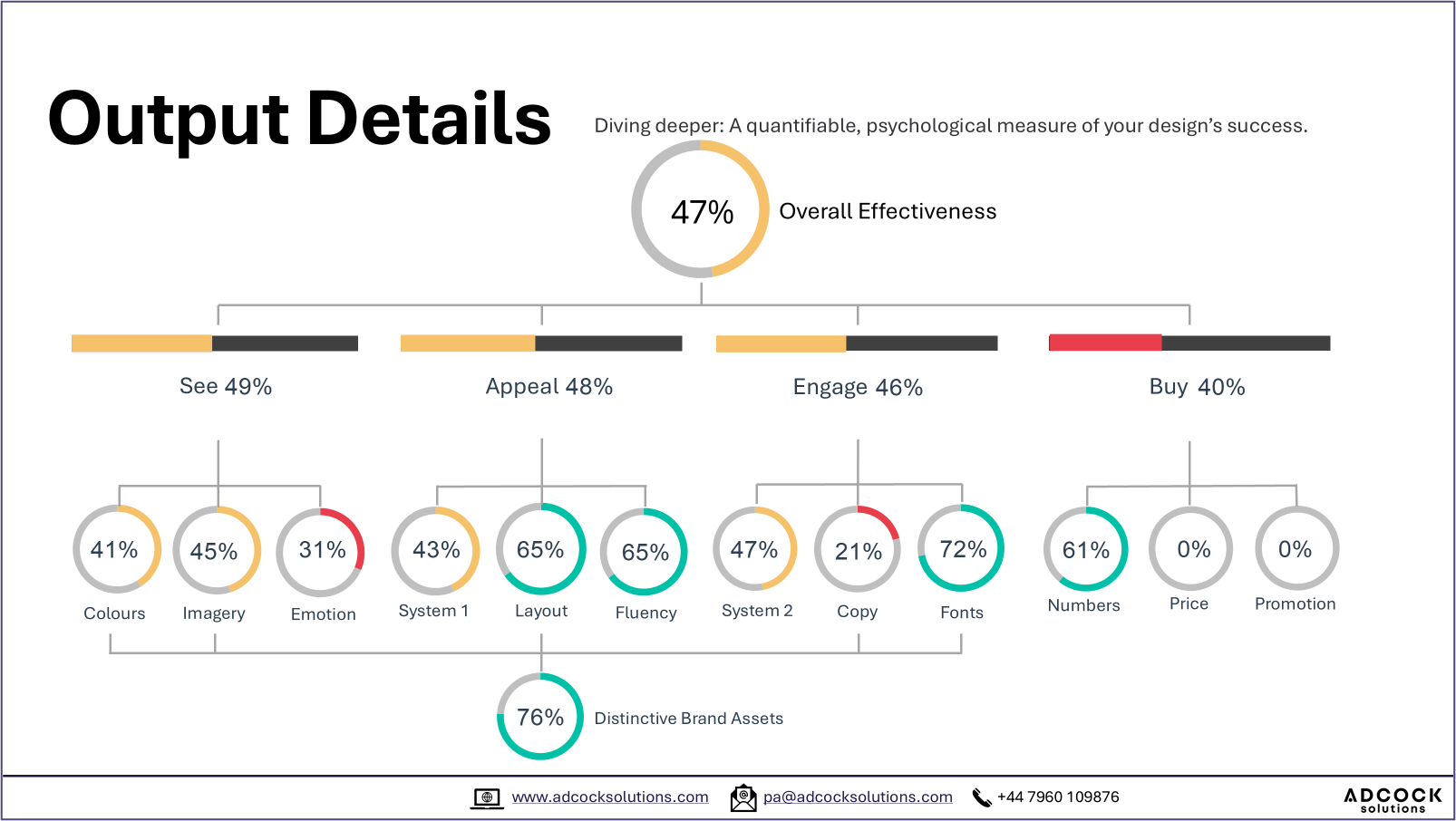
This approach is particularly valuable because it acknowledges something vital: Design and Psychology, when combined outperform Design alone. Emotion, cognition, culture, and even images and fonts used all play a role in shaping how someone feels about a piece of packaging or shopper marketing intervention.
3. The Framework: Layers of Consumer Understanding
The framework is where things really start to click. At first glance, you’ll see a flow chart of psychological aspects, each one representing a layer of understanding in the shopper response process.
The main aspects represent the four central categories: See, Appeal, Engage, and Buy
Let’s break those down:
See: How psychologically attention grabbing is each design
Appeal: How psychologically attractive is each design
Engage: How easy is it to mentally process each design overall
Buy: How persuasive is each design in converting shoppers into purchasers.
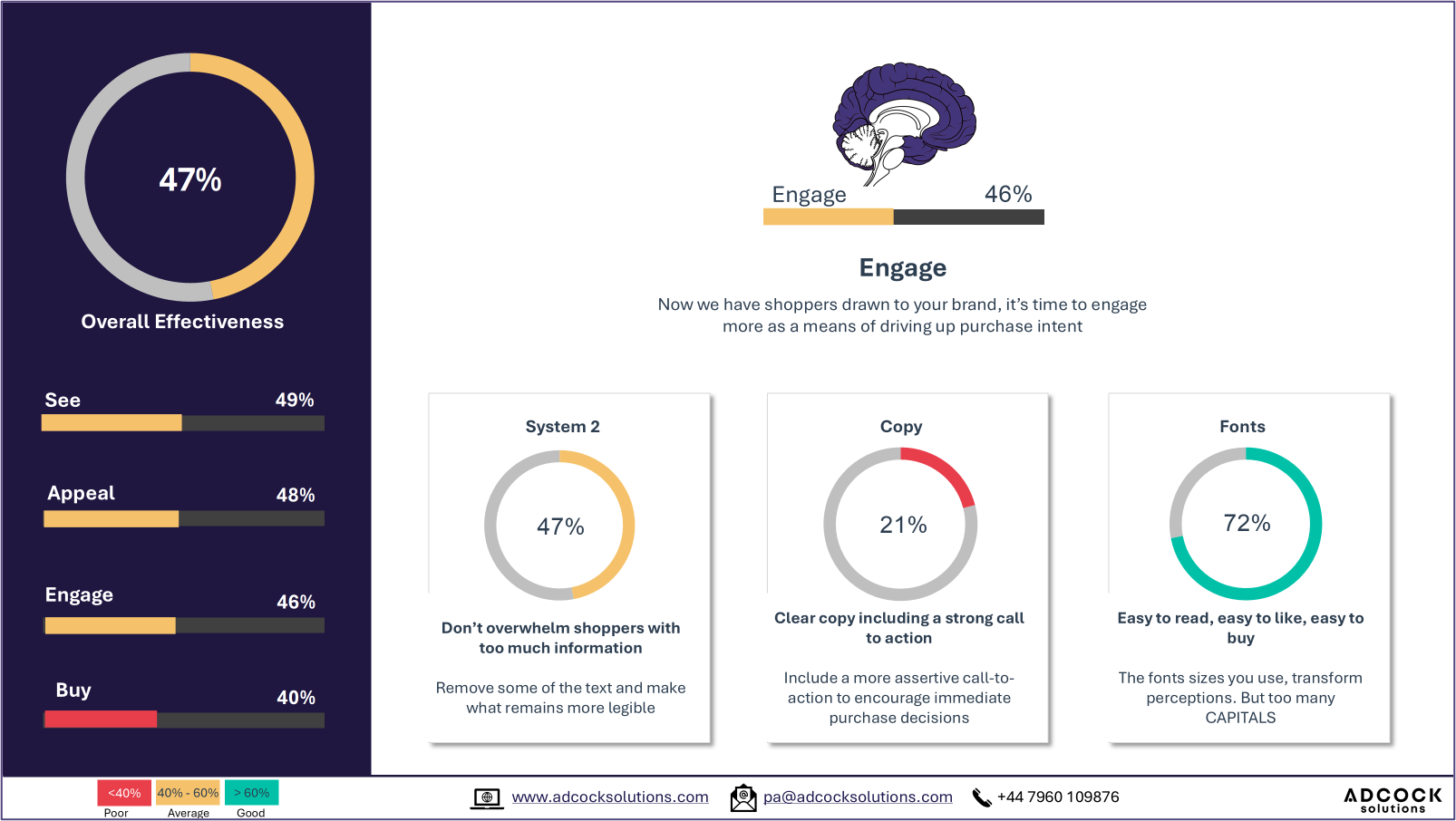
Each of these major categories branches into smaller, more specific concepts, and the framework makes it easy to drill down for specific optimisation opportunities, For instance, if you're interested in how "product imagery" influences snack packaging and POS, you can dive into the affective category and find insight and expert comment.
4. The Scenarios: Making It Real
Theory is great, but design is about application. That’s why the tool includes a range of specific insights to help users get the most form each and every design.
Take numbers and price communication for example. The tool offers proven insights relating to how best to communicate numeric data based on more than 500 proven psychological insights mined the worlds of academia, commercial applications and shopper research.
What’s crucial here is that each insight is based on proven psychology and behavioural science. They aren’t opinions or aesthetic preferences, but solid, robust and evidence based guidance and recommendations.
It brings the abstract design theory to life in a way that’s immediately recognisable to anyone who has ever presented a design concept to a sceptical client, or been a client having to select which design option to sign off.
5. The Iterative process
Finally, the fifth component of the tool is Iterative quantification, which allows users of the tool to catalogue insights be shopper intervention type, packaging objectives overall design effectiveness.
This iterative process is vital. After all, the ultimate goal of the instrument isn’t to replace creativity with science, but to empower creative professionals with better tools to understand and anticipate shopper reactions.
Design is still a deeply human process. What this tool does is give that human intuition a sharper edge.
“For the first time we’ve been able to remove personal opinion and biases and use a more scientific approach in designing communication materials. The tool gives us benchmarks and helps measure the incremental impact design iterations are likely to have. Critically it provides a structured rigour to ensuring we address real customer needs.”
National retailer with 200+ stores
Why This Matters for You
Whether you're a brand strategist, packaging designer, marketing director, or shopper marketer, the Creative Test offers a bridge between the research lab and the design studio. It helps teams speak a common language, one that unites data with design, logic with feeling.
In an age where emotion drives purchasing decisions more than ever before, understanding how your packaging and shopper marketing interventions feel is just as important as how it functions. And if you can design marketing communications that feel right, you're not just catching the consumer’s eye, you’re winning their heart.
Want to dive deeper into the Creative Test or explore how it could apply to your design practice? Let’s connect and continue the conversation.

We have a small number of FREE proof of concept demonstrations available: Ask us how you can simply send us a design image and we will run the full Creative Test, FREE of charge.

